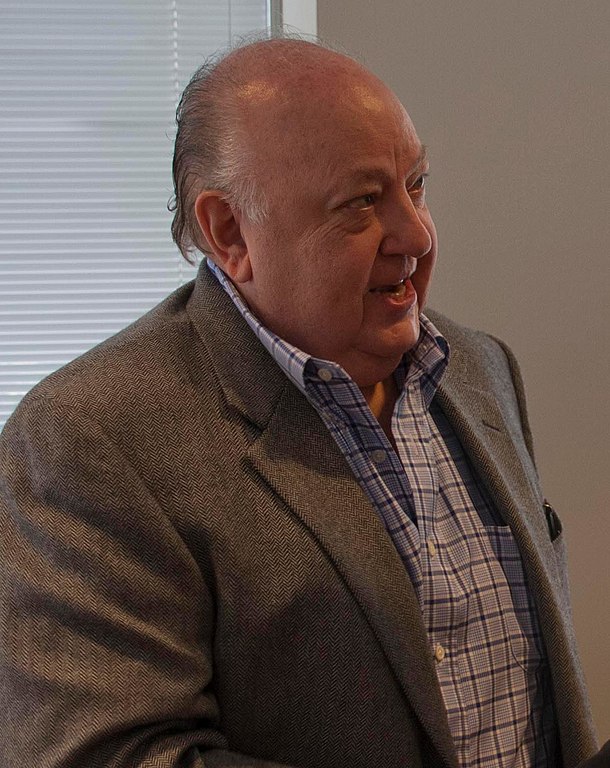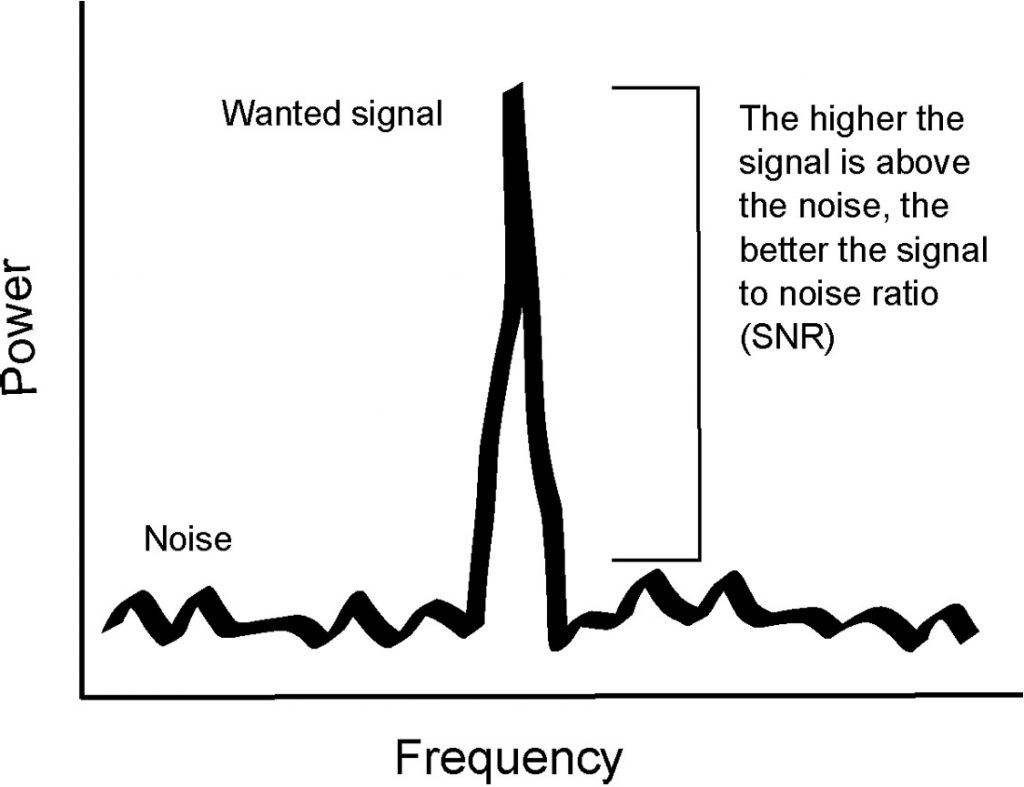How conservative propaganda works in America: The signal and the noise

Roger Ailes, president of Fox News and chairman of the Fox Television Stations Group, at the Fox News Headquarters in Times Square, New York, June 14, 2013.
We’ve heard a lot about Russian meddling recently. What we don’t hear about is how more than 50 years of corporate special interest group propaganda fattened the U.S. up, priming our country for Russian influence on the 2016 election.
Let’s think about conservative propaganda using a communications concept: signal-to-noise ratio (SNR).
Signal-to-noise ratio (SNR) is a measurement used in communications to compare the level of desired signal to the level of background noise.
In analog communications, such as AM/FM radio or analog television broadcasts, a high SNR ratio means that you will receive a signal with little static or interference.
To enable effective communication, you want to maximize your SNR ratio—more signal, less noise.
The conservative signal
We often refer to Fox News as “Fox Noise” or “Faux Noise.” From a communications standpoint, this is a flawed analogy. Fox News is the signal, along with the other corporate media in print, TV, or radio.
Fox News, ClearChannel radio shows like The Rush Limbaugh Show, and conservative print and online outlets such as The Washington Times and Newsmax broadcast the core of the corporate values message.
They evangelize and promote certain values with the goal of moving policy goal posts. They work to win people over to their worldview to make previously undesirable solutions acceptable (or even desirable). For example, ideas like selling off our public schools that once would have seemed insane are now seen as reasonable or even desirable by many.
The core of this worldview is protecting “owners” and accumulated wealth. Businessmen of the 1960s like Lewis Powell believed that populism threatened business. They advocated for more “public relations” (read propaganda) to influence minds and counter the populist movements of the 1960s.
Conservative media outlets like Fox focus on building and maintaining this values-based coalition and expanding their worldview.
The noise
But this and this alone doesn’t produce a singularly clear signal. To produce a clear signal, conservatives and corporate special interest groups have aggressively worked to turn what they termed the “liberal” media into entertainment noise.
Once upon a time there was this idea in America that our broadcast spectrum belonged to the public. In the Radio Act of 1927, Congress declared that broadcast licenses should only be issued when doing so served the public interest. In 1949, the FCC interpreted this as meaning that broadcasters must include discussions of public importance in their broadcasts, and that they should do so in a fair manner. These rules lead to non-profitable activities such as the nightly news.
Conservatives hated the Fairness Doctrine because it dictated that partisan broadcasters provide airtime for a response. Imagine if every conservative radio or TV show in the country had to provide airtime for opposing views? This would dilute the conservative signal.
So they waged a war against the existing media and the Fairness Doctrine. They claimed that objective media was biased against them and was “liberal.”
In order to balance out the liberal, there must be competing conservative opinions. Today, we have very little objective media. Instead, we have right/left opinions. Robert Kennedy, Jr. described it like this on PBS’ Tavis Smiley Show:
The devolution of the American press began in 1986 when Ronald Reagan abolished the fairness doctrine.
We had a law in this country that we passed in 1928 that said that the air waves belong to the public. The broadcasters can be licensed to use them, but only if they use them to promote the public interest, to inform the public and advance democracy. That’s why we have the 6:00 news. They didn’t want it. The broadcasters didn’t want that because the news departments were chronic money losers.
But they were forced to put on the news at 6:00 and even today you hear news on the music radio stations and that’s an artifact of the fairness doctrine. They said, if you’re using the broadcast air waves, you have to do that. You have to avoid corporate consolidation. That was the other rule.
…
So now you have five giant corporations that control virtually all 14,000 radio stations in our country, all 2,200 TV stations, 80 percent of our newspapers, all of our billboards and most of the large internet content providers.
So you have five guys who are deciding what Americans hear as news. They no longer have an obligation to serve the public interest. Their only obligation is to their shareholders. They serve that obligation not by informing us, telling us the things we need to understand to make rational decisions in a democracy, but rather by entertaining us.
So they appeal to the prurient interests that all of us have in the reptilian core of our brains for sex and celebrity gossip. We know we’re the best entertained, the least informed, people on the face of the world. They got rid of their investigative reporters. 85 percent of them lost their jobs in the last 15 years.
They got rid of their foreign news bureaus so the Bush and Cheney administration can say to the American people, “Oh, we’re gonna go into this 800-year-old fist fight in Mesopotamia and they’re gonna meet us with rose petals in the streets” and the Americans believe them.
The Canadians didn’t believe them because the Canadians still have a fairness doctrine. Fox News can’t go to Canada. It’s illegal to lie on the air in Canada. So Fox News can’t go there.
England has the same kind of rules and in Europe, but in our country, we lost those rules and, as a result, we know a lot about Brittany Spears’ gradual emotional decline and we know a lot about Charlie Sheen, but we don’t know much about global warming or the fact that the Appalachian Mountains essentially no longer exist.
To give you an idea of what this looks like, I recently interviewed for a political reporter position with a decent-sized newspaper. During the interview, it was explained that my job would be to find articles from both the right and left that would drive traffic.
Notice there’s no mention of any public interest. Or informing people. Or objectivity. It’s just finding extreme opinions and driving traffic.
It’s noise and entertainment.
How do we improve our signal-to-noise ratio?
Some thoughts:
- The greatest threat to our democracy is corporate media.
- We need entertainers who are also working in the public interest. This was the initial purpose of outlets like The Huffington Post. When it was sold to AOL and tried to become a more traditional outlet, its strong signal was diluted. We should be proud of outlets with strong public interest biases.
- To make space for outlets with strong biases in the public interest, we need a story about what the media currently is: It’s corporate. It’s for profit. It makes money in two ways: a) propaganda, and b) entertainment.
- We need to advocate for media that acts in the public interest, media that informs and educates.
- We need to support media acting in the public interest and look for revenue models that allow these types of outlets to exist.
- We should push for equal time on public airwaves and bring back The Fairness Doctrine (even if this is a stretch goal).
- We should think about signal-to-noise ratio when leveraging social media. Are we getting caught up in noise? Or are we sending clear messages?
We might learn some lessons from the conservative movement of the 1960s and 1970s.
The first thing they focused on was the media.
David Akadjian is the author of The Little Book of Revolution: A Distributive Strategy for Democracy (ebook now available). Cross posted at Daily Kos.











